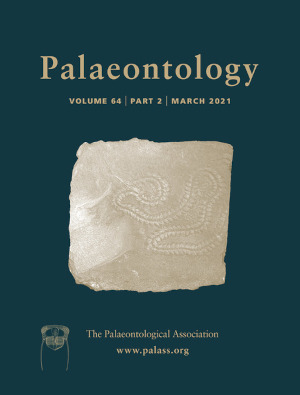Reg. Charity No. 1168330

Marine deposits of earliest Eocene age in northern Jutland, Denmark, are renowned for yielding diverse teleost assemblages that have proved central for enhancing our understanding of the early evolution of many extant actinopterygian clades. In this study, we investigate diminutive larval fish fossils from the Stolleklint Clay, Ølst Formation, that retain multiple soft-tissue features preserved as distinct dark-coloured stains. To examine the elemental and molecular composition of these soft parts, we employed a combination of time-of-flight secondary ion mass spectrometry (ToF-SIMS), scanning electron microscopy (SEM) and energy-dispersive x-ray spectroscopy (EDS). Our analyses revealed that the preserved structures contain chemically identifiable eumelanin intimately associated with densely aggregated microbodies that are morphologically consistent with melanosome organelles. Thus, we conclude that the carbonaceous structures represent traces of originally melanized body parts, including the eyes and peritoneum. Comparable pigmentation patterns are seen in many extant teleost larvae that use semi-transparency as a means of camouflage in pelagic environments, to suggest a similar visual appearance of the Stolleklint Clay fish fossils. This in turn suggests that adaptations for concealment and UV-protection had already evolved by the beginning of the Eocene, notably during a time interval characterized by an extreme greenhouse climate, when the global fish fauna become increasingly modern in composition.
AcknowledgementsThe photograph of the modern sea bream larva shown in Figure 1H is credited to Bernd Ueberschär. Niels Bonde provided taxonomic information on FUM-N-12779, FUM-N-12781, FUM-N-13476, FUM-N-16240, NHMD 625460 and FUM-N-14772. We thank Annie Marie Kaargaard for the discovery of NHMD 625460. Financial support for this project was provided by a Grant for Distinguished Young Researchers (Award No 642-2014-3773; Swedish Research Council) to Johan Lindgren, as well as a project grant (Award No 2019-03731; Swedish Research Council) to Peter Sjövall. Rana N. S. Sodhi and an anonymous referee commented on an earlier draft of this manuscript.